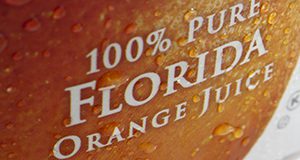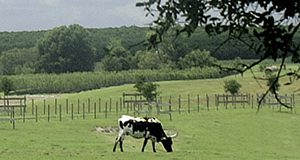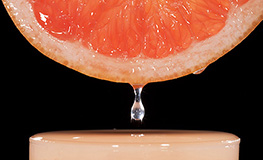This 4-page fact sheet written by Yan Heng, Marisa Zansler, and Lisa House and published by the UF/IFAS Food and Resource Economics Department presents consumers’ responses to a monthly survey and provides a look at those consumers who have contributed to a surge in orange juice sales since April. It is intended to help the industry understand the possible impacts of the COVID-19 pandemic and develop marketing plans to sustain orange juice purchases beyond the short run.
https://edis.ifas.ufl.edu/fe1082
Tag: Lisa House
An Overview of the Grapefruit Market in France
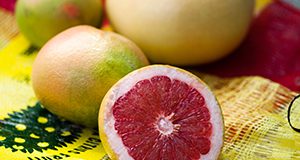
The authors of this 4-page fact sheet, Yan Heng, Mitzey Tejeda, and Lisa House, used a national survey to analyze and understand French consumer preferences and consumption behavior regarding grapefruit. They found that more than half of the respondents were willing to purchase grapefruit in the upcoming year, suggesting that French consumers hold an overall positive image of grapefruit. As a major and well-recognized supplier providing high-quality products, Florida has the opportunity to continue producing and exporting grapefruit to France. Published by the UF/IFAS Food and Resource Economics Department.
https://edis.ifas.ufl.edu/fe1072
Food System Study of Martin County, Florida
Martin County, Florida has a rich agricultural history with farming and cattle ranching being important economic drivers since the early 1930s. Nevertheless, the county struggles to meet the balance between food supply and demand. Farmers often face challenges finding sizable, secure, well-paying markets, and the most consumers do not participate in local food transactions. This 4-page fact sheet written by William A. Messina, Jr., Lisa House, Yvette Goodiel, and Carol Albertsand published by the UF/IFAS summarizes two studies conducted to examine agricultural production in Martin County and its food processing, distribution and marketing systems and infrastructure to better identify potential constraints and opportunities for the local food system.
http://edis.ifas.ufl.edu/fe1071
An Overview of the Grapefruit Market in South Korea
According to the Foreign Agricultural Service of the United States Department of Agriculture, worldwide consumption of fresh grapefruit in 2014/15 increased from 4.2 million to 5.2 million metric tons. China, which is the largest producer of grapefruit, was largely responsible for the increase. In South Korea, however, the state of Florida in the United States has traditionally dominated the grapefruit market. The South Korean grapefruit market has been increasing in recent years and is expected to keep growing. The industry in Florida now faces fierce competition from other suppliers with lower import prices and different harvest seasons. This 5-page fact sheet written by Yan Heng, Hyeyoung Kim, and Lisa House and published by the Food and Resource Economics Department aims to provide an overview of the grapefruit market in South Korea and evaluate the potential of this market for Florida fresh grapefruit producers.
http://edis.ifas.ufl.edu/fe1003
Identifying the Attitudes and Preferences of Parents and Children for Seafood: Summary of Focus Group Results
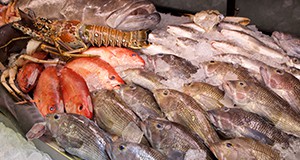
Seafood contains high-quality protein, vitamins, and minerals that have many health benefits, but the average family’s consumption of seafood in the United States remains below recommended levels. To begin to understand how to raise consumption levels, the study described in this three-page fact sheet focused on the influence parents’ seafood consumption habits may have on their children. Written by Anh Sam, Xiang Bi, and Lisa House and published by the Department of Food and Resource Economics.
http://edis.ifas.ufl.edu/fe992
How to Start a Food Business: Writing a Business Plan
 Before starting a new food business, you should set a goal and have detailed plans to accomplish that goal. But writing a good business plan is often a challenge and it requires a great amount of effort. This 3-page fact sheet provides guidance on how to write a good food-business plan. Written by Soohyoun Ahn, Lisa House, and Renée Goodrich-Schneider, and published by the UF Department of Food Science and Human Nutrition, December 2014. (Photo: iStock/Thinkstock)
Before starting a new food business, you should set a goal and have detailed plans to accomplish that goal. But writing a good business plan is often a challenge and it requires a great amount of effort. This 3-page fact sheet provides guidance on how to write a good food-business plan. Written by Soohyoun Ahn, Lisa House, and Renée Goodrich-Schneider, and published by the UF Department of Food Science and Human Nutrition, December 2014. (Photo: iStock/Thinkstock)
http://edis.ifas.ufl.edu/fs259
Estimating Willingness to Pay for New Mandarin Cultivars: A Revealed Preference Approach
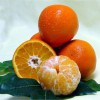 California has overtaken Florida to become the major US domestic mandarin producer. Despite a shift in consumer preferences toward the ‘Clementine’ mandarin that is widely grown in California, this cultivar is not well adapted to the subtropical climate of Florida. But in 2009, the University of Florida introduced the ‘Sugar Belle’, a cross between the ‘Clementine’ mandarin and the ‘Minneola’ tangelo. Survey test results showed that subjects preferred this new cultivar in terms of overall flavor, sweetness, acidity, and juiciness. survey test results showed that the Florida ‘Sugar Belle’ was preferred over the California ‘Clementine’ mandarin and the Florida ‘Murcott’ mandarin (aka Honey mandarin) in terms of overall flavor, sweetness, acidity, and juiciness. To determine consumer willingness to pay for specific attributes, UF/IFAS economists combined sensory evaluation and experimental auctions in a unique way, by comparing two different types of ‘Sugar Belle’ (SB1 and SB2) with the main competing product to identify the most desirable characteristics and to determine the best marketing and pricing strategy. This 6-page fact sheet was written by Xiang Bi, Lisa House, Frederick Gmitter, and Zhifeng Gao, and published by the UF Department of Food and Resource Economics, September 2014.
California has overtaken Florida to become the major US domestic mandarin producer. Despite a shift in consumer preferences toward the ‘Clementine’ mandarin that is widely grown in California, this cultivar is not well adapted to the subtropical climate of Florida. But in 2009, the University of Florida introduced the ‘Sugar Belle’, a cross between the ‘Clementine’ mandarin and the ‘Minneola’ tangelo. Survey test results showed that subjects preferred this new cultivar in terms of overall flavor, sweetness, acidity, and juiciness. survey test results showed that the Florida ‘Sugar Belle’ was preferred over the California ‘Clementine’ mandarin and the Florida ‘Murcott’ mandarin (aka Honey mandarin) in terms of overall flavor, sweetness, acidity, and juiciness. To determine consumer willingness to pay for specific attributes, UF/IFAS economists combined sensory evaluation and experimental auctions in a unique way, by comparing two different types of ‘Sugar Belle’ (SB1 and SB2) with the main competing product to identify the most desirable characteristics and to determine the best marketing and pricing strategy. This 6-page fact sheet was written by Xiang Bi, Lisa House, Frederick Gmitter, and Zhifeng Gao, and published by the UF Department of Food and Resource Economics, September 2014.
http://edis.ifas.ufl.edu/fe955
Analyzing Production Records of Commercial Sweet Orange Blocks to Measure Effects of Mechanical Harvesting on Long-Term Production and Tree Health
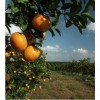 Ever since mechanical harvesting systems were introduced in the 1960s, growers expressed serious concerns over the potential negative impact mechanical harvesting could have on their trees. A study was undertaken in 2010 to analyze grower production data and compare whether mechanical harvesting had an adverse effect on fruit yield or shortened tree longevity as compared to hand harvesting. The purpose of this article is to describe how the study was organized and to summarize its results and conclusions. This 4-page fact sheet was written by Fritz M. Roka, Lisa H. House, and Katrina R. Mosley, and published by the UF Department of Food and Resource Economics, May 2014.
Ever since mechanical harvesting systems were introduced in the 1960s, growers expressed serious concerns over the potential negative impact mechanical harvesting could have on their trees. A study was undertaken in 2010 to analyze grower production data and compare whether mechanical harvesting had an adverse effect on fruit yield or shortened tree longevity as compared to hand harvesting. The purpose of this article is to describe how the study was organized and to summarize its results and conclusions. This 4-page fact sheet was written by Fritz M. Roka, Lisa H. House, and Katrina R. Mosley, and published by the UF Department of Food and Resource Economics, May 2014.
http://edis.ifas.ufl.edu/fe949
FE821 Seafood Perceptions among People Aged 55 and Above: Summary of Focus Groups Results
FE821, a 6-page fact sheet by Allen F. Wysocki, Lisa House, and William A. Messina, Jr., provides a brief summary of the focus group part of a study of perceptions of Florida residents aged 55 and over on seafood consumption. Published by the UF Department of Food and Resource Economics, November 2009.
http://edis.ifas.ufl.edu/FE821
